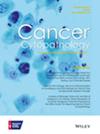Thin-layer cervical sample evaluation: Conventional light microscopy versus digital whole-slide imaging
Abstract
Background
Whole-slide imaging (WSI) has been adopted in many fields of pathology for education, quality assurance, and remote diagnostics. In 2021, the College of American Pathologists (CAP) updated guidelines to support pathology laboratories regarding the WSI systems validation process. However, the majority of published literature refers to histopathology rather than cytology. The aim of this study was to compare conventional light microscopy (CLM) and WSI in thin-layer cervical samples evaluation according to CAP guideline.
Methods
A sample set of 64 thin-layer cervical specimens from women 25–64 years old who participated in cervical cancer screening programs in Tuscany was distributed among five cytologists at Institute for Cancer Research, Prevention and Clinical Network (Florence, Italy) for CLM analysis. After 2 weeks, the corresponding 64 digitally scanned slides were available at several magnifications for WSI evaluation.
Results
Substantial/near perfect agreement between CLM and WSI evaluation (0.77 ≥ κ ≥1) was observed for the negative for intraepithelial lesion or malignancy (NILM) class with concordance rates from 83.3% to 100%.Variability in concordance was observed among all the cytologists: 50%–85.7% for low-grade squamous intraepithelial lesion (LSIL), 47.1%–100% for high-grade squamous intraepithelial lesion (HSIL), 50%–100% for atypical glandular cells (AGCs) favors adenocarcinoma (ADK) with moderate/near perfect agreement (0.47 ≥ κ ≥1). Concordance and agreement rates were also variable within the “borderline” cytological categories of atypical squamous cells of undetermined significance (ASC-US), atypical squamous cells cannot exclude an HSIL (ASC-H), and AGCs with lower or not computable kappa for some readers. The overall intralaboratory concordance between CLM and WSI was 92.9% with a near perfect agreement (κ = 0.84) for NILM. Substantial agreement (κ ≥0.65) was assessed for LSIL, HSIL/squamous cell carcinoma, AGCs, and ADK categories whereas the agreement was lower (κ ≤0.39) for ASC-US and ASC-H.
Conclusions
This study showed an overall substantial/near perfect agreement between CLM and WSI for all the cytological categories except the “borderline” ASC-US and ASC-H. Further progress in cytology WSI systems are needed before introducing it in routine diagnostics.



 求助内容:
求助内容: 应助结果提醒方式:
应助结果提醒方式:


